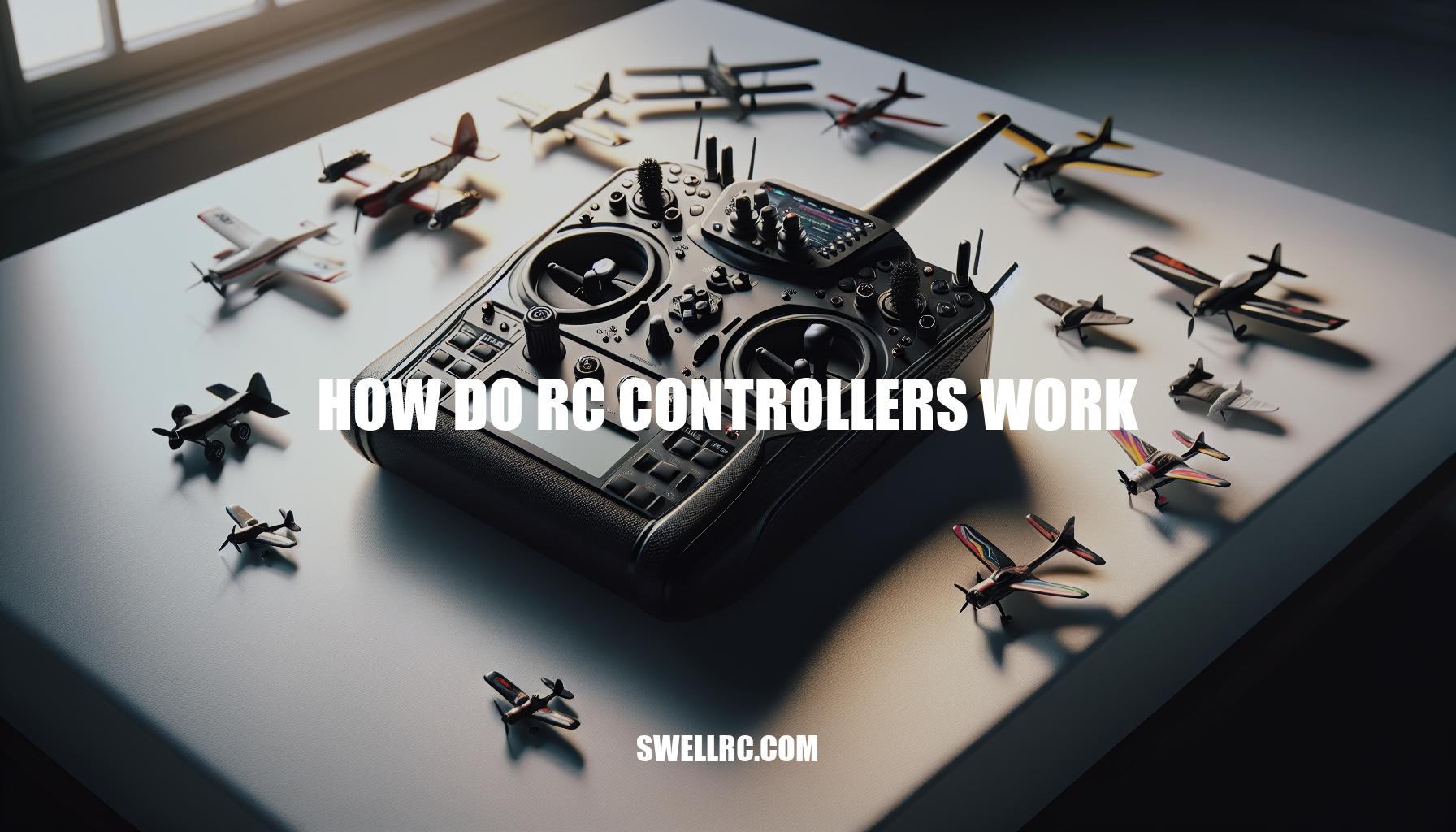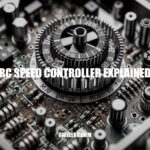How Do RC Controllers Work: Understanding the Basics
Picture this – you’re in the back seat of your car, but you’re still driving using just a handy gadget. Sounds thrilling, right? Well, welcome to the fascinating world of radio-controlled (or RC) controllers! These compelling devices aren’t some modern marvel; they’ve actually been around since the genius Nikola Tesla himself demonstrated the first radio-controlled boat back in 1898. But what are they exactly? Simply put, these are handheld devices that use radio signals to give you control over vehicles, boats, planes—virtually anything that moves! Just like you’d control a gaming character with a joystick, RC controllers let you be the master of real tiny machines, placing fun and unparalleled control right into your hands. Exciting, isn’t it?
How RC Controllers Work
Ever wondered: how do RC controllers work? Well, let’s break it down. RC controllers are made up of a fascinating orchestra of parts all designed to function in harmony. There’s the transmitter, sort of the air traffic controller of the whole operation. It sends out signals, much like your local radio station sending out your favorite tunes, to the receiver in the RC vehicle. The receiver here plays a similar role to the radio set that catches these tunes for your enjoyment. Instead of tunes, however, it interprets the electromagnetic waves it receives into specific actions.
An equally important component is the crystal. No, not the shiny bling-bling kind. This crystal is a small piece of electronic wizardry that helps in frequency selection. Think of it as the tune selector on your radio that lets you jump from one station to another. These tiny but mighty crystals help ensure your RC car’s radio doesn’t interfere with someone else’s, allowing for multiple RC vehicles to zoom around together without crashing into each other.
These are just the main players though. An RC controller is a technological symphony, with many more parts working in harmony to bring remote control magic to your fingertips. Each of them plays a key role in understanding how RC controllers work.
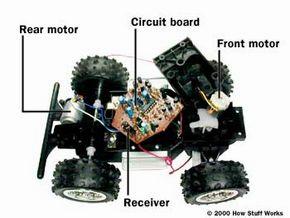
What other components are involved in making an RC controller work?
Well, my friend, think of an RC controller as the ‘mastermind’ behind your RC device. It’s not just a transmitting device; there’s quite a bit more under the hood. One crucial thing is the antenna, a vital component for sending and receiving signals. Then there’s the battery powering up all the magic.
Now, let’s dive deeper. Transistors are the tiny yet mighty parts regulating the current flow. And let’s not forget the crystals. They are the secret agents helping in frequency selection – sort of like a unique signature tune!
What more you ask? Well, there’s the encoder, translating joystick movements into signals. And last but not least, an often overlooked component – the servos on the receiver end, converting those signals into physical movement.
Put them all together, and you have yourself a full-fledged, working RC controller. It’s true that understanding this exciting piece of tech might seem daunting but hey, that’s also part of the thrill, isn’t it? There’s always something new to learn, and such complexities make our RC devices more than just toys. So, keep on exploring, because the magic is definitely in the details.
How Do RC Controllers Work?
Let’s dive a little deeper into the world of RC controllers. So, how do RC controllers work? Well, a key component to get your head around involves understanding channels. In radio-controlled jargon, it’s not about your favourite TV or radio stations. In this context, each function of the RC vehicle is handled by a separate channel on the controller. Consider a basic RC car – it would primarily need just two channels – one responsible for making it move forward and in reverse, and another for steering it left or right. It’s a bit like an orchestral conductor waving his baton, directing different sections of the orchestra to play their part. In our analogy, each instrument would be a distinct ‘channel’, just as RC controllers have distinct channels for steering, throttle, and so on. As a further down the road tip, add more channels to your repertoire if you’re controlling more sophisticated models or vehicles. The complexity increases, but so does the fun! This layer of understanding can help improve your skills in this exciting hobby. So go out there and channel your enthusiasm into understanding how different ‘channels’ contribute to the magical experience of radio-controlled devices. Like a maestro, create your unique symphony in the realm of RC vehicles!
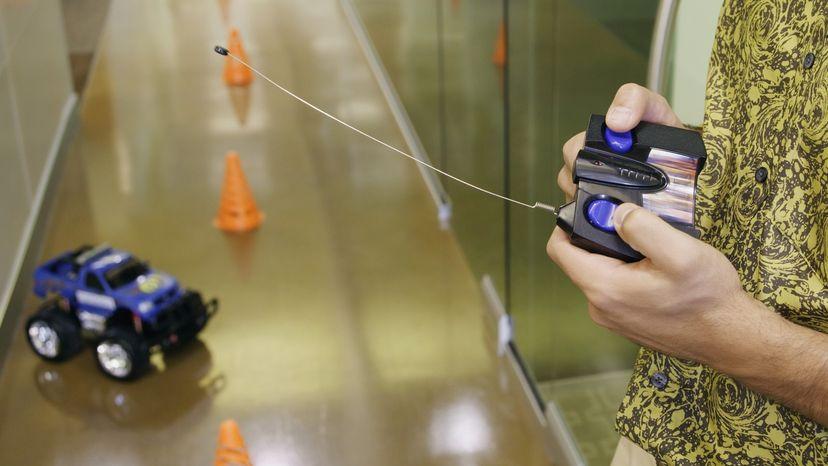
What are channels in RC controllers?
In the fascinating world of RC (radio-controlled) devices, the term ‘channels’ has a really intuitive notion. Think about it as roads – each channel in an RC controller symbolizes a unique pathway that commands travel through to reach your drone, car, boat, or plane. More channels mean more functions you can control – such as moving forward, backward, turning left or right, and so on. For instance, a 2-channel controller may only be able to turn left or right and move forwards, but slap on a few more channels and voila – your RC machine doubles up its thrilling maneuvers! It’s fascinating how such a simple concept helps you command the skies, right? But remember, while extra channels provide exciting extended control, it also means you’ve got a bit more complexity to master. So, keep experimenting at your own pace, and soon you’ll be a master of the RC world. Happy controlling!
Unlocking the Magic of Frequencies in RC Controllers
Now, let’s delve into how frequencies add a fascinating layer of complexity to how RC controllers work. Just like our favorite rock station, RC controllers use specific frequencies to communicate with their vehicles. In yesteryears, these controllers typically used AM or FM radio frequencies. Fast forward to today, and most modern models have shifted to the 2.4GHz frequency range. And no, it’s not just about having a digital makeover; it serves a practical purpose too.
- These high-tech controllers are not just stuck with one frequency. They can hop from one frequency to another within the 2.4GHz band, significantly reducing the risks of interference.
- If we think back to the days when multiple RC cars would race together, control signals often got mixed, leading to some disastrous pile-ups. These new 2.4GHz systems, with frequency hopping capability, have largely solved that complication.
- Product-specific data is a testament to this evolution. Take, for instance, the Traxxas TQi – an RC controller that pairs with its dedicated model using a specific, unique code. This innovation ensures a smooth operation, even when multiple models are vying for the tracks at the same time.
Intriguing, isn’t it? The way frequencies have been manipulated over the years to ensure a seamless command from the controller to the vehicle is nothing short of entertainment magic. It turns the dream of controlling multiple RC vehicles at the same time into a fun, interference-free reality.
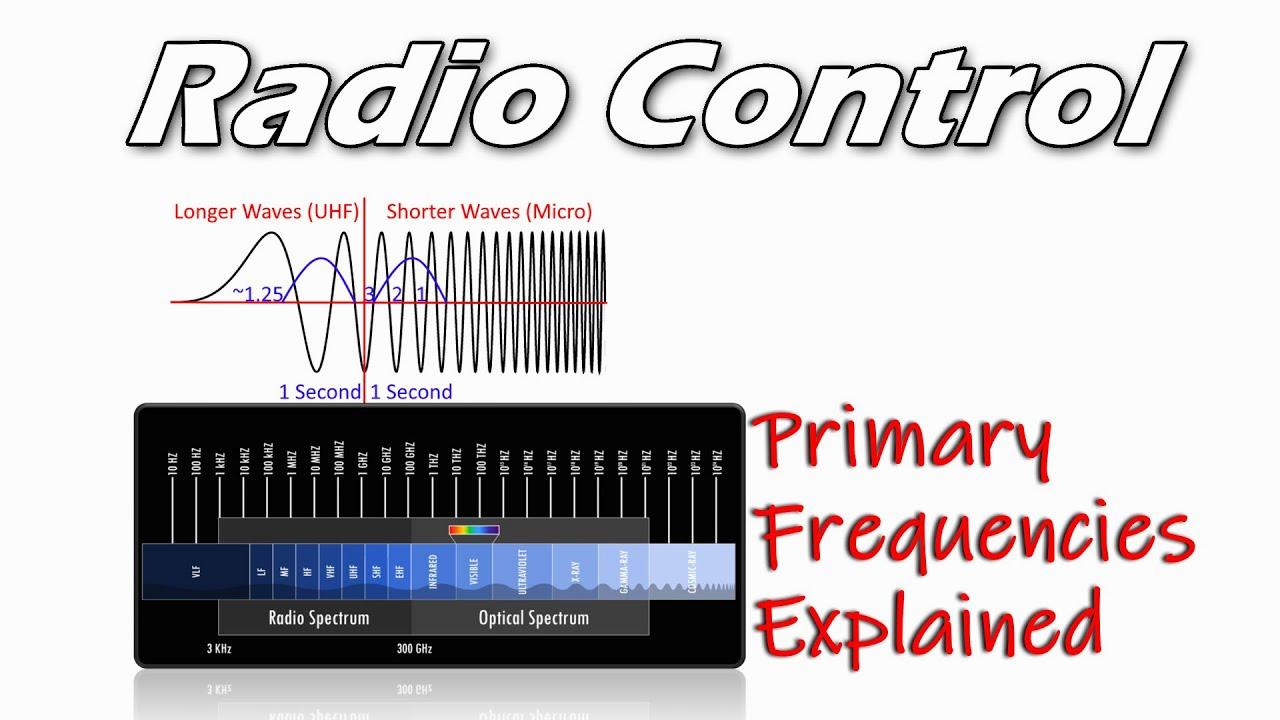
How have modern RC controllers improved on interference issues with their use of frequencies?
RC controllers these days are leaps and bounds beyond what they used to be in terms of dealing with interference issues, and it’s all thanks to the magic of 2.4 GHz frequency technology. You remember those gnarly interference problems in the old days, right? Well, they’ve been pretty much eradicated. Here’s how it works: these new-generation remotes create a unique code that connects to your RC device and yours alone, like a direct hotline. It’s kind of like having your very own secret radio station for each RC model. That’s a tremendous improvement over the old “crystal” controllers, which were prone to picking up signals from other devices. Picture merging onto a highway without any traffic, instead of wrestling on the road filled with mini-vans and semi-trucks: that’s what it’s like operating on a 2.4 GHz frequency. This advancement also enables us to control multiple devices nearby without them interfering with each other. So you don’t have to worry about your drone nosediving when someone else toggles their controller. The tech has also opened the doors for more serious RC operators, allowing for some incredibly precise and complex controls.
How RC Controllers Work
Let’s take a journey down memory lane and marvel at how far RC tech has come. Just imagine, RC controllers used to be simple on-off switches, much akin to tossing a coin to decide your fate! But technological progress waits for no one, and thus we influence the world of RC controllers today with advanced electronic capabilities.
In the 1960s, companies like Kraft Systems broke new ground by introducing the first proportional control systems, making the operation of RC vehicles incredibly responsive and precise. Google “Kraft Systems” if you’re curious to see what their controllers looked like. It was a leap so significant that it made RC piloting less of a guesswork and more of a graceful dance. Imagine having a hand-held device that could translate your every move into an RC model miles away. That’s how RC controllers work now, all thanks to pioneers like Kraft Systems.
That’s not all. The evolution of RC controllers is intertwined with advancements in other areas of technology as well. Don’t forget Moore’s Law, which states that the number of transistors in a dense integrated circuit doubles about every two years. This principle has greatly impacted the RC world, allowing us to pack more power and functionality into our handheld controllers without increasing their physical size.
So, what does the future hold? Stay tuned to find out!
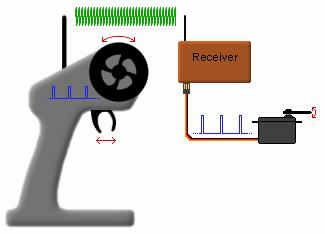
What is Moore’s Law and how has it impacted the evolution of RC controllers?
Moore’s Law, in a nutshell, is a prediction made in 1965 by Gordon Moore, co-founder of Intel. He basically suggested that the number of transistors, the building blocks of circuits essentially, would double approximately every two years. Now you might be thinking, what does this have to do with RC controllers? Well, hold on to your joysticks, I’m getting there!
As Moore’s Law progressed, technology became smaller, faster, and more efficient – it’s why we’ve gone from comically large computers to slick smartphones in no time flat. This efficiency evolution is absolutely witnessed in the realm of RC controllers.
Imagine the early days of RC technology – bulky, slow, and with a range that would make a snail snicker. It was Moore’s Law that helped usher in a new era of powerful microprocessors, making controllers lighter, quicker, and capable of handling multiple channels.
I fondly remember the first RC car I had as a kid. It was a cumbersome beast compared to today’s streamlined models. Now, you’ve got controllers that can manage multiple functions, from direction, speed, to auxiliary gizmos – all in the palm of your hand. Heck, some even offer telemetry data in real time!
Moore’s Law has driven this miniaturization and power improvement of controllers, sparking transformation in hobbies, competitive racing, and drones alike. It’s exciting to see where it might steer us next, as technology continues to evolve, shaping and reshaping our world. Though, whenever I pick up my RC controller and watch my little speedster zip around, I can’t help but be thankful to good ol’ Gordon.
Decoding RC controllers for maximum fun!
Choosing the right RC controller can feel a tad overwhelming, but fret not, we’ve got you covered. When pondering over ‘how do RC controllers work‘, it’s crucial to also factor in what you anticipate your RC vehicle to accomplish.
- First things first, determine the number of ‘channels‘ you need. Remember, each function of the vehicle requires a separate channel on the controller. If you’re aiming to perform forward and back motions along and left and right steering, a simple two-channel controller would suffice.
- Next, consider the ‘frequency type‘. Older models used AM or FM radio frequencies, but most modern ones operate on the 2.4GHz frequency. Products like the Traxxas TQi take this up a notch by pairing with a model using a unique code, ensuring smooth operation even when multiple models are running.
- Lastly, pay attention to additional features. These could be failsafe functions, programmability, range, response time, and so on. Is a longer range important to you? Do you need quicker response times? These are all factors to ponder over before making a decision.
Remember, the key here is to ensure that your RC vehicle and controller are, proverbially and literally, on the same wavelength. Compatibility is your golden ticket to enjoying the world of RC vehicles to its fullest. Let’s deep dive into this fascinating world together!
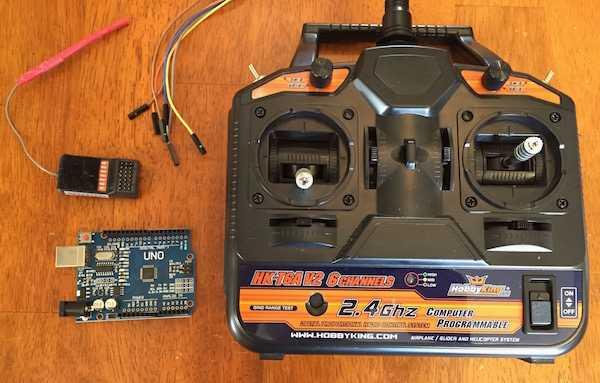
What are some additional features to consider when choosing an RC controller?
Choosing an ideal RC controller isn’t just a walk in the park, you know? There’s more to think about than simply choosing the one that catches your eye. Have you thought about the transmitting range? This is key because a more significant range can give you more control and flexibility.
Ever considered the number of channels? The more channels, the more functions can be controlled on your RC model. If you’re a pro or aspiring to be one, those extra channels can make all the difference.
Then there’s the response time which is massively important for those epic, high-speed races. You’ll want an RC controller that responds rapidly to your every command.
Let’s not forget battery life – imagine your RC model dying on you midway. Talk about a buzz kill! A controller with a longer battery life means more fun times in the park!
Lastly, how does the RC controller feel in your hands? You want something comfortable, easy to handle, and user-friendly. After all, you’ll be holding it for a while each time you decide to play.
So you see, it’s about checking out the fine print and understanding what each feature brings to your RC experience. Happy shopping!
And that, my fellow tech enthusiasts, brings us to the exciting frontier of the future prospects for the world of RC controllers. With imagination being the only limit, we could soon be steering our favorite RC cars or drones with touch-screen controls, issuing instructions via voice commands, or perhaps (hold onto your seats for this one), even manipulating them with mind control. Truly, when you’ve seen how far we’ve come – from Nikola Tesla’s inaugural demonstration to today’s sophisticated devices – it’s a wild ride to contemplate what might come next.
Remember, a crucial aspect of understanding how RC controllers work is not just about their history, technologies, and components; it’s also about forecasting what these amazing devices might look like in the future. So whether you’re an RC hobbyist or a newcomer, stay tuned to the exciting innovations just around the corner.
Finally, in navigating this brilliant journey of understanding ‘how do RC controllers work,’ I hope this article has succeeded in taking you from the backseat to the driver’s seat in knowing the intricacies of RC controller technology. Happy steering!

